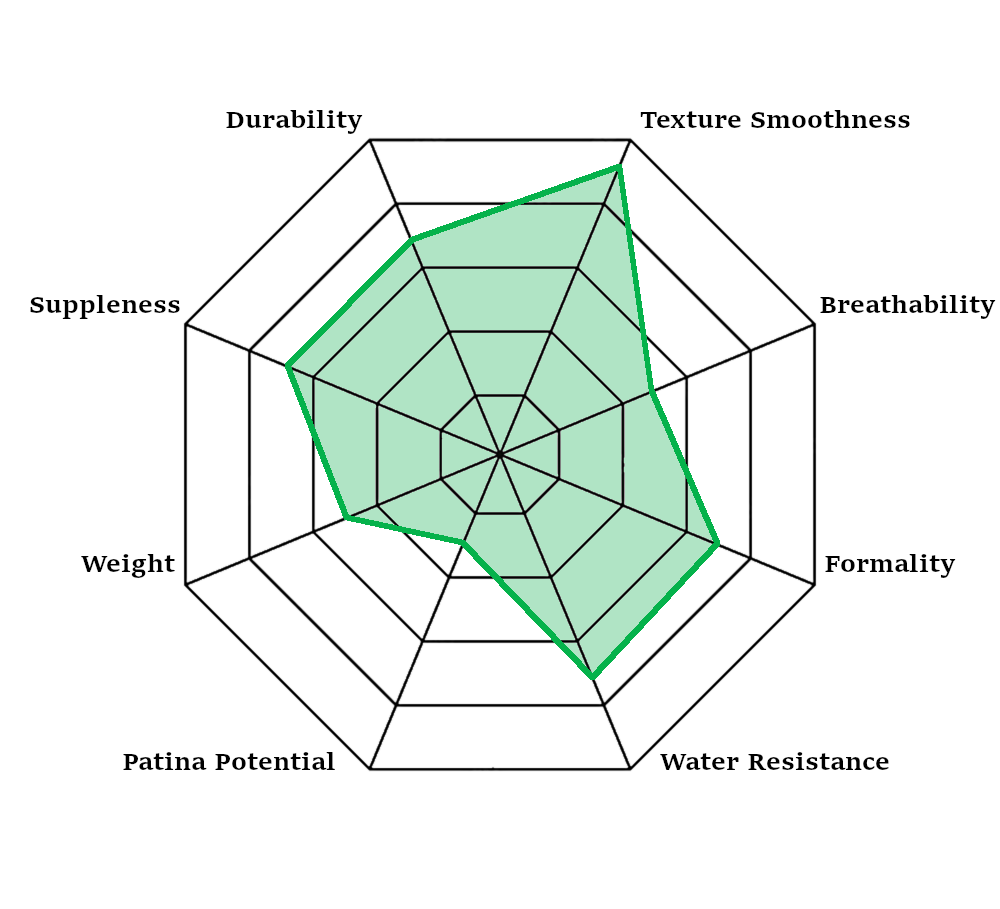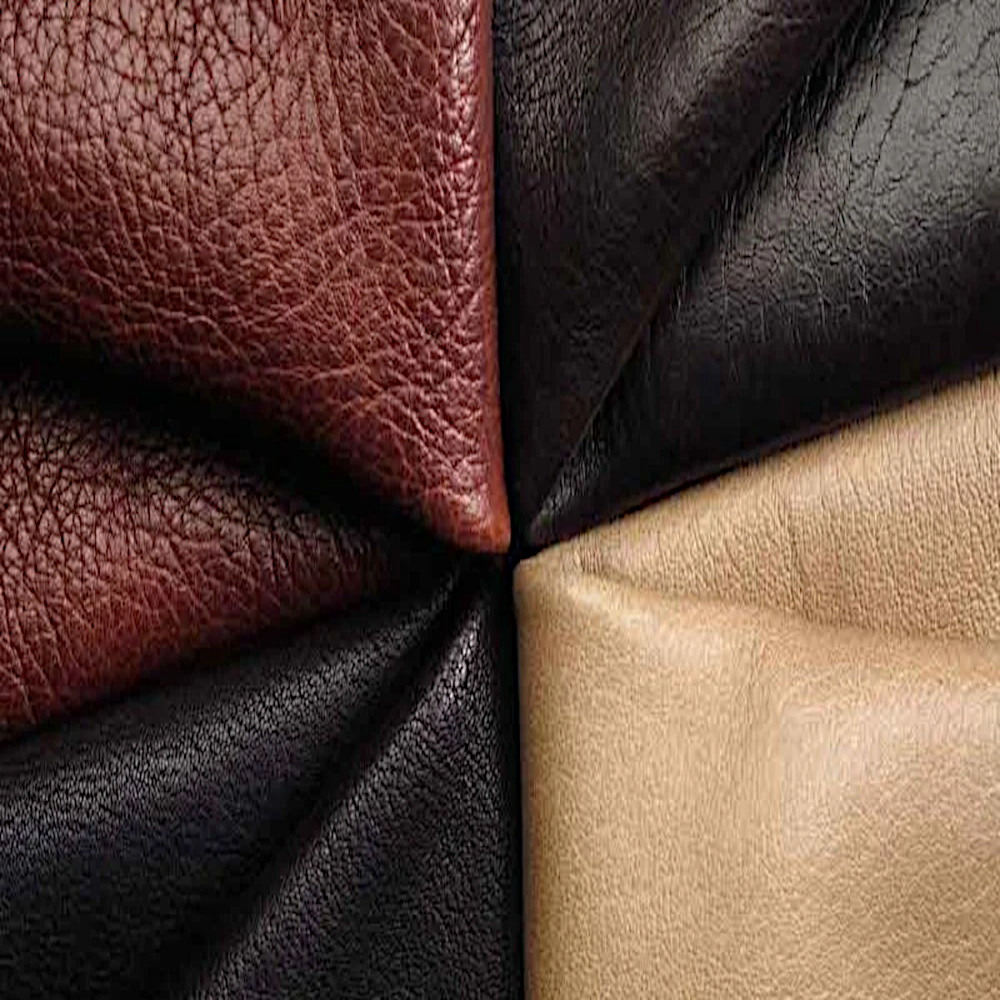
Top Grain Leather
Top Grain leather is produced by splitting off the very outermost layer of the hide and then sanding or buffing the surface to remove imperfections. A finish coat is often applied, resulting in a more uniform appearance than Full Grain, while still retaining good quality and durability.
Top Grain offers a balance of qualities, often presenting a very uniform surface (Texture Smoothness 9/10) and good initial suppleness (7/10). Its durability (7/10) is good, though less than Full Grain. The applied finish typically enhances water resistance (7/10) but can reduce breathability (5/10) and largely eliminates its natural patina potential (3/10). It can be made in various weights (avg. 5/10) and has a clean look suitable for moderate formality (7/10).
Top Grain leather is widely used for a variety of bespoke goods where a uniform finish and good performance are desired. Common uses include clean-lined jackets, trousers, skirts, handbags, upholstery, and many styles of shoes, offering a more consistent look than Full Grain.
Leather Characteristics Legend
Durability: Measures the leather's resistance to physical damage like scratches, scuffs, and tears. A higher score indicates a tougher, more wear-resistant hide suitable for high-wear garments.
Suppleness: Refers to the leather's softness, flexibility, and ease of movement. A higher score means a softer, more pliable leather that requires less breaking-in and often feels more comfortable initially.
Weight: Indicates the relative thickness and density of the leather. A higher score suggests a lighter, thinner leather (like lambskin), often preferred for less structured items or warmer weather. A lower score indicates a heavier, thicker hide, providing more structure and warmth.
Patina Potential: Rates the leather's tendency to develop a desirable, characterful appearance (patina) over time with use and exposure. A higher score signifies leathers (like full-grain) that age beautifully, developing depth in color and sheen.
Water Resistance: Measures the leather's natural or enhanced ability to repel water. A higher score indicates better protection against moisture, often influenced by the tanning process and applied finishes.
Formality: Assesses the leather's suitability for formal versus casual attire. Higher scores are associated with smooth, sleek leathers often used in dressier jackets or accessories. Lower scores lean towards more rugged or textured leathers common in casual wear.
Breathability: Gauges the leather's ability to allow air and moisture vapor (perspiration) to pass through. Higher scores mean better ventilation, although leather is generally less breathable than most fabrics.
Texture Smoothness: Describes the tactile and visual fineness of the leather's surface. A higher score indicates a very smooth, fine-grained surface. Lower scores represent a more pronounced grain, pebbled texture, or a napped surface like suede or nubuck.







